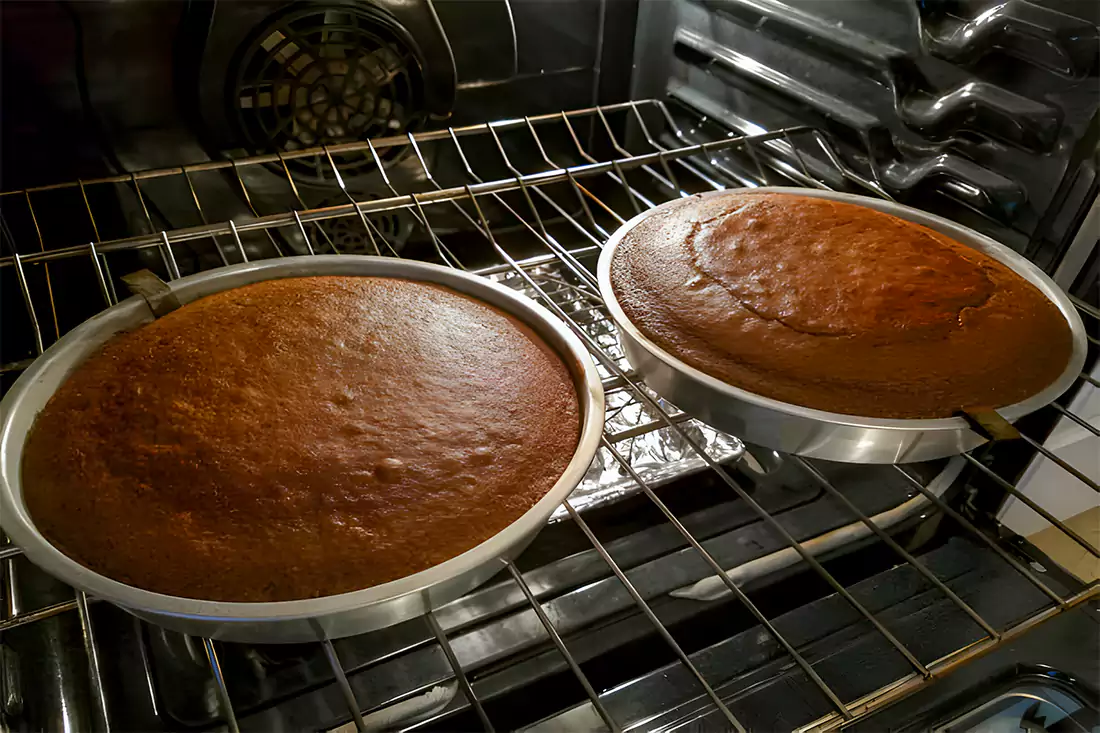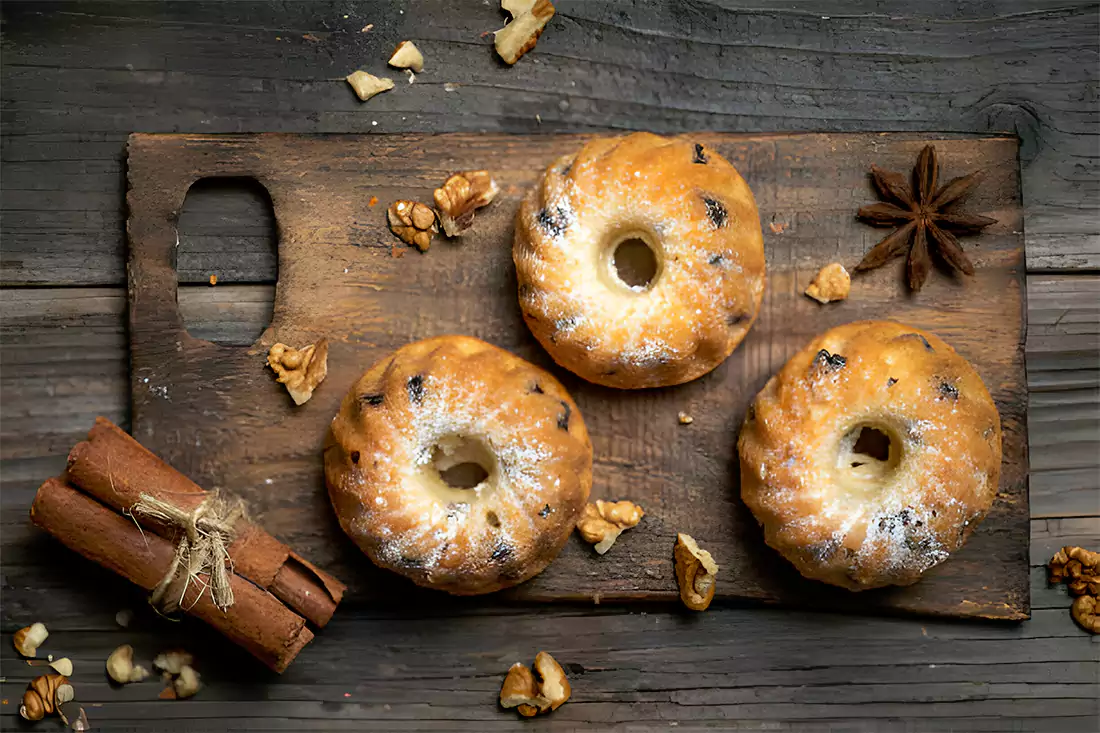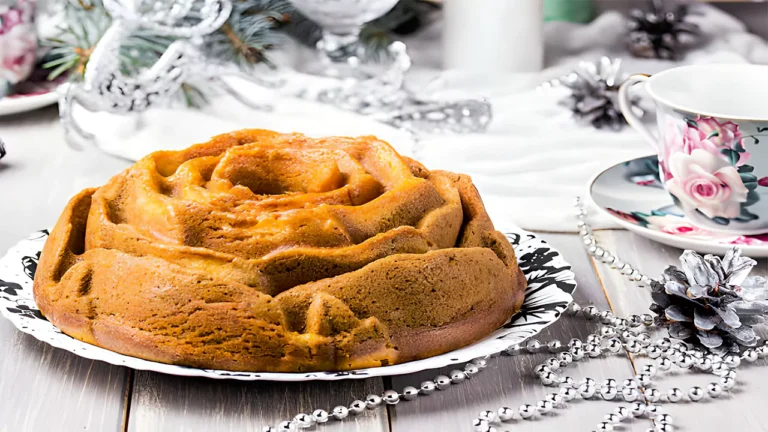Understanding Different Types of Cake Pans
Bundt Pans vs. Regular Cake Pans
In the world of baking, understanding the Bundt Pan Advantages over regular cake pans can significantly elevate your baking skills. This article delves into how these unique pans offer superior heat distribution, stunning design, and an unmatched aesthetic appeal, transforming your baking experiences.
On the flip side, regular cake pans, typically round or square, offer simplicity and versatility. They’re the go-to for a variety of cake types, from layered wedding cakes to simple sponge cakes. However, they lack the Bundt pan’s unique ability to enhance heat distribution and create decorative shapes.
Historical Background of Bundt Pans
The Bundt pan’s journey is as rich as the cakes it bakes. Originating from European brioche-style pans, it gained popularity in America in the mid-20th century, thanks to the Minnesota-based company, Nordic Ware. The name “Bundt” itself doesn’t refer to a specific recipe but rather to the pan’s distinctive ringed design. This design not only imparts a charming appearance to the cakes but also plays a crucial role in how they bake.
Over the years, the Bundt pan has become a beloved tool in kitchens worldwide, synonymous with family gatherings and celebratory events. Its enduring appeal lies in its ability to blend functionality with elegance, making it a staple for both amateur and professional bakers.The Bundt pan’s journey is as rich as the cakes it bakes
Distinctive Characteristics of Bundt Pans
One of the significant Bundt Pan Advantages is their unique design, which contributes to both aesthetics and functionality
Design and Aesthetics
The Bundt pan is not just a baking tool; it’s a canvas for culinary artistry. Its most striking feature is the fluted or grooved sides, which create intricate, sculpted patterns on the cake. This design element transforms a simple cake into a work of art, making it a centerpiece at gatherings without the need for elaborate decorations. The beauty of a Bundt cake lies in its simplicity and elegance, a testament to the pan’s unique design.
Moreover, the central tube of the Bundt pan is a marvel of engineering in the baking world. It ensures even baking and prevents the dreaded undercooked center, a common issue in thicker cakes. This tube isn’t just functional; it also adds to the aesthetic appeal, giving the cake a distinctive ring shape that’s instantly recognizable.

Material Varieties and Heat Distribution
Bundt pans come in various materials, each with its own set of advantages. The most common are aluminum, ceramic, and cast iron. Aluminum pans are lightweight, conduct heat efficiently, and are generally affordable, making them a popular choice among bakers. Ceramic pans, on the other hand, are heavier and retain heat longer, which can be beneficial for certain recipes. Cast iron Bundt pans are less common but prized for their durability and even heat distribution.
The choice of material affects not just the baking process but also the final outcome of the cake. For instance, dark-colored aluminum pans can lead to quicker browning, which might be desirable for some recipes but not others. Understanding these nuances can help bakers make more informed decisions when selecting their Bundt pans.
Aluminum pans are lightweight, conduct heat efficiently, and are generally affordable, making them a popular choice among bakers.
Why Choose a Bundt Pan for Baking?
The Bundt Pan Advantages extend to the baking process, where their design ensures even heat distribution and perfect texture.
Enhanced Heat Conduction
One of the key advantages of a Bundt pan is its superior heat conduction. Thanks to the central tube, heat is distributed more evenly throughout the pan, ensuring that the cake bakes uniformly. This is particularly beneficial for denser cakes, like pound cakes or coffee cakes, which require consistent heat to cook through without becoming dry or overbaked on the edges. The even heat distribution also minimizes the risk of those frustrating uncooked centers, making the Bundt pan a reliable choice for bakers aiming for perfection.
Impact on Cake Texture and Moisture
The design of the Bundt pan doesn’t just contribute to even baking; it also plays a significant role in the texture and moisture of the cake. The pan’s shape allows for more of the cake’s surface area to be exposed to heat, which results in a firmer, yet moist texture. This is especially ideal for recipes that are rich in butter or have a dense crumb structure. The end result is a cake that’s delightfully moist on the inside with a slightly crisp exterior, a combination that’s hard to achieve with regular cake pans.The end result is a cake that’s delightfully moist on the inside with a slightly crisp exterior…

Aesthetic Appeal and Minimal Decoration Needs
Let’s not forget the aesthetic appeal of Bundt cakes. The intricate designs of Bundt pans mean that the cakes require minimal decoration. A simple dusting of powdered sugar or a drizzle of glaze is often enough to make these cakes stand out. This simplicity is a boon for bakers who prefer to focus on flavor and texture over elaborate decoration. The Bundt pan takes care of the visual aspect, ensuring that each cake is as beautiful as it is delicious.
Performance Comparison in Baking
When comparing Bundt pans with regular cake pans, the Bundt Pan Advantages become particularly evident in terms of versatility and baking quality.
Cake Types Best Suited for Each Pan
Choosing between a Bundt pan and a regular cake pan often comes down to the type of cake you’re planning to bake. Bundt pans are ideal for dense, moist cakes like pound cakes, coffee cakes, and butter cakes. The pan’s design allows these thick batters to cook evenly, creating a perfectly baked cake with a moist interior and a beautiful exterior.
Regular cake pans, with their simple shapes, are more versatile. They’re well-suited for a wide range of cakes, from light and fluffy sponge cakes to layered birthday cakes. These pans are particularly good for recipes that require stacking or sculpting, as their flat tops and straight sides make them easy to work with.
Choosing between a Bundt pan and a regular cake pan often comes down to the type of cake you’re planning to bake.
Limitations and Flexibility in Usage
While Bundt pans offer unique advantages, they also have some limitations. Their intricate designs can make them tricky to clean, and they’re not suitable for cakes that need to be layered or sculpted. Additionally, not all cake recipes adapt well to the Bundt pan’s deep and fluted design, which can affect the cake’s structure and appearance.

Regular cake pans, on the other hand, offer more flexibility. They’re easier to clean and maintain, and their simple design makes them suitable for a broader range of baking styles and techniques. However, they don’t provide the same level of heat distribution as Bundt pans, which can be a drawback for certain types of cakes.
Selecting the Right Pan for Your Baking Needs
Considering the Bundt Pan Advantages, selecting the right pan involves understanding your specific baking needs
Factors to Consider When Choosing a Pan
When it comes to selecting the perfect cake pan, several factors come into play. The first consideration is the type of cake you plan to bake. As we’ve discussed, Bundt pans are ideal for dense, moist cakes, while regular cake pans are more suited for a variety of cake types, including layered and sculpted cakes.
Another important factor is the material of the pan. Aluminum pans are great for their heat conductivity and even baking, but they can react with acidic ingredients, affecting the flavor of your cake. Non-stick pans offer easy release and cleanup but may not be as durable in the long run. Ceramic and glass pans provide excellent heat retention but can bake slower and may require temperature adjustments.
Maintenance and Durability
Maintenance and durability are also crucial when choosing a cake pan. Bundt pans, especially those with intricate designs, require careful cleaning to maintain their detailed patterns. They can also be more prone to wear and tear if not properly cared for. Regular cake pans are generally easier to maintain and more durable, especially if they’re made of heavy-duty materials like thick gauge steel or anodized aluminum.
Considering these factors will help you choose a pan that not only suits your baking style but also stands the test of time in your kitchen.
Maximizing Baking Success with Bundt Pans
To fully utilize the Bundt Pan Advantages, here are some expert tips for baking and pan preparation
Preparing the Pan
Before you even start mixing your batter, the key to a perfect Bundt cake lies in how you prepare the pan. Given the intricate designs of most Bundt pans, it’s crucial to thoroughly grease every nook and cranny. A brush can help ensure that you reach into all the detailed patterns. For best results, use a combination of butter and flour or a baking spray with flour in it. This preparation prevents the cake from sticking and ensures a clean release, preserving the beautiful design of your cake.
Baking Techniques and Times
Bundt cakes often require a slightly different approach than regular cakes. Due to their thickness and density, they generally bake longer at a lower temperature. This slow baking process allows the cake to cook evenly without burning the outside. It’s important to follow the recipe’s recommended temperature and baking time closely. Additionally, rotating the pan halfway through the baking process can help achieve an even browning.
Removing Cakes from Bundt Pans
One of the trickiest parts of Bundt baking is removing the cake from the pan. Patience is key here. Let the cake cool in the pan for about 10 minutes before attempting to turn it out. This cooling period allows the cake to set and detach itself slightly from the sides of the pan. When you’re ready to unmold, place a cooling rack over the pan, flip it, and gently tap it to release the cake. If the cake doesn’t release immediately, give it a few more minutes to cool.
Frequently Asked Questions
Common Queries About Bundt Pans
Bundt pans, with their unique design and baking requirements, often lead to a host of questions. Here are some of the most common queries:
-
Can I use a regular cake recipe in a Bundt pan?
- Yes, most regular cake recipes can be adapted for a Bundt pan. However, you may need to adjust the baking time and temperature, as Bundt cakes typically bake longer due to their density.
-
How do I prevent my Bundt cake from sticking to the pan?
- Properly greasing your Bundt pan is crucial. Use a baking spray with flour or brush every crevice with butter and dust with flour. Make sure to cover all the intricate designs of the pan.
-
Why did my Bundt cake come out dry?
- Overbaking is a common cause of dryness in Bundt cakes. Always check your cake for doneness a few minutes before the recipe’s suggested baking time, especially if you’re using a dark-colored pan, which can heat up more quickly.
Troubleshooting Tips
Even experienced bakers can face challenges with Bundt cakes. Here are some tips to troubleshoot common issues:
-
Cake Sticking to the Pan: If your cake is sticking, try cooling it in the pan a bit longer. Running a thin spatula or knife around the edges can also help loosen it.
-
Uneven Browning: To prevent uneven browning, avoid overfilling the pan and rotate it halfway through baking.
-
Cracks on Top: Cracks can occur if the oven temperature is too high. Make sure to bake at the temperature specified in the recipe and place the pan in the center of the oven.
- Why did my Bundt cake come out dry?
Conclusion: Summing Up the Bundt Pan Experience
Exploring Bundt pans goes beyond baking tools; it unlocks creativity and culinary excellence. Its design guarantees even heat and stunning looks, elevating simple recipes into showstoppers—a testament to baking artistry.
Whether you’re a novice baker or a seasoned pro, the Bundt pan offers a delightful challenge and an opportunity to experiment with flavors, textures, and designs. Its versatility and distinctive features make it a valuable addition to any kitchen, promising delicious results and stunning presentations.
Stay tuned for the conclusion of our comprehensive guide, where we’ll wrap up our exploration of Bundt pans…
By embracing the Bundt pan, you’re not just choosing a baking vessel; you’re embracing culinary history and a tool that fosters baking creativity and joy. So, when you reach for that fluted pan next time, remember its endless possibilities and the delightful treats it can help create.
